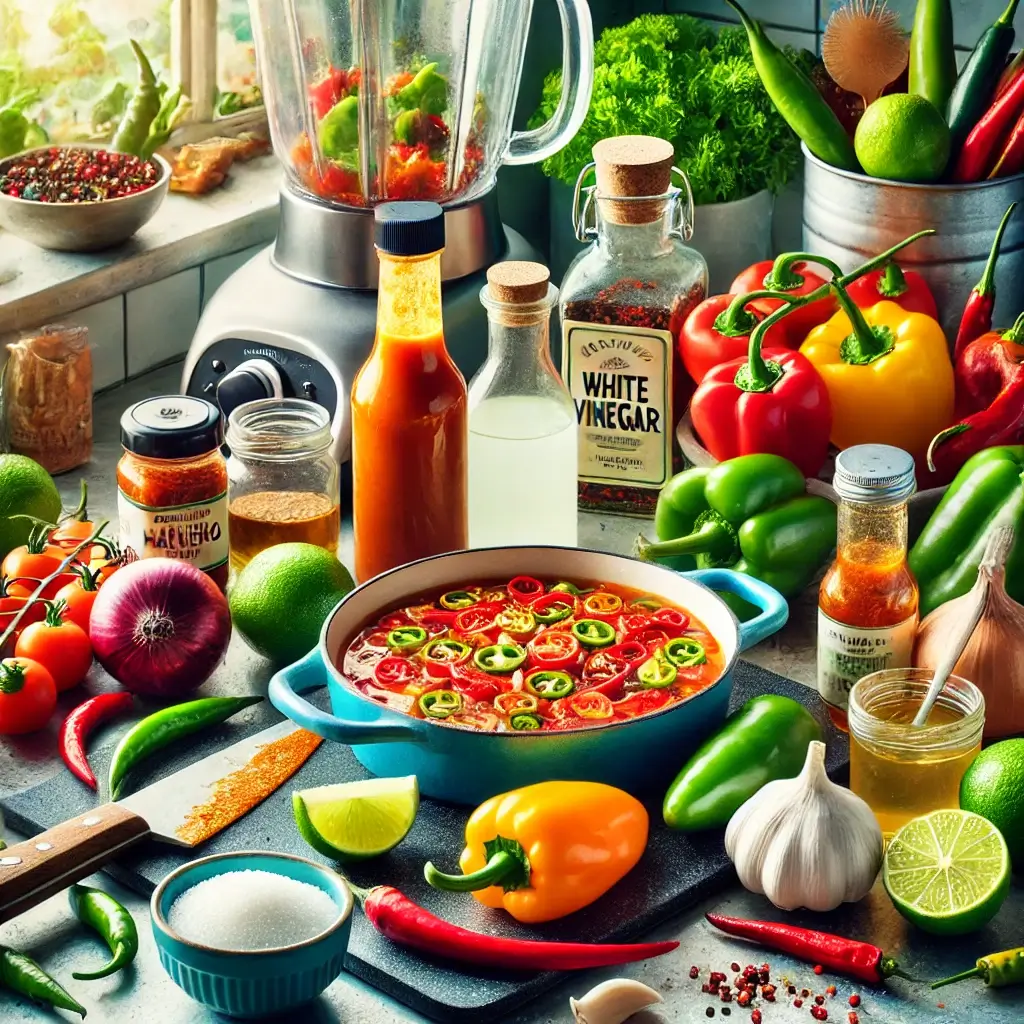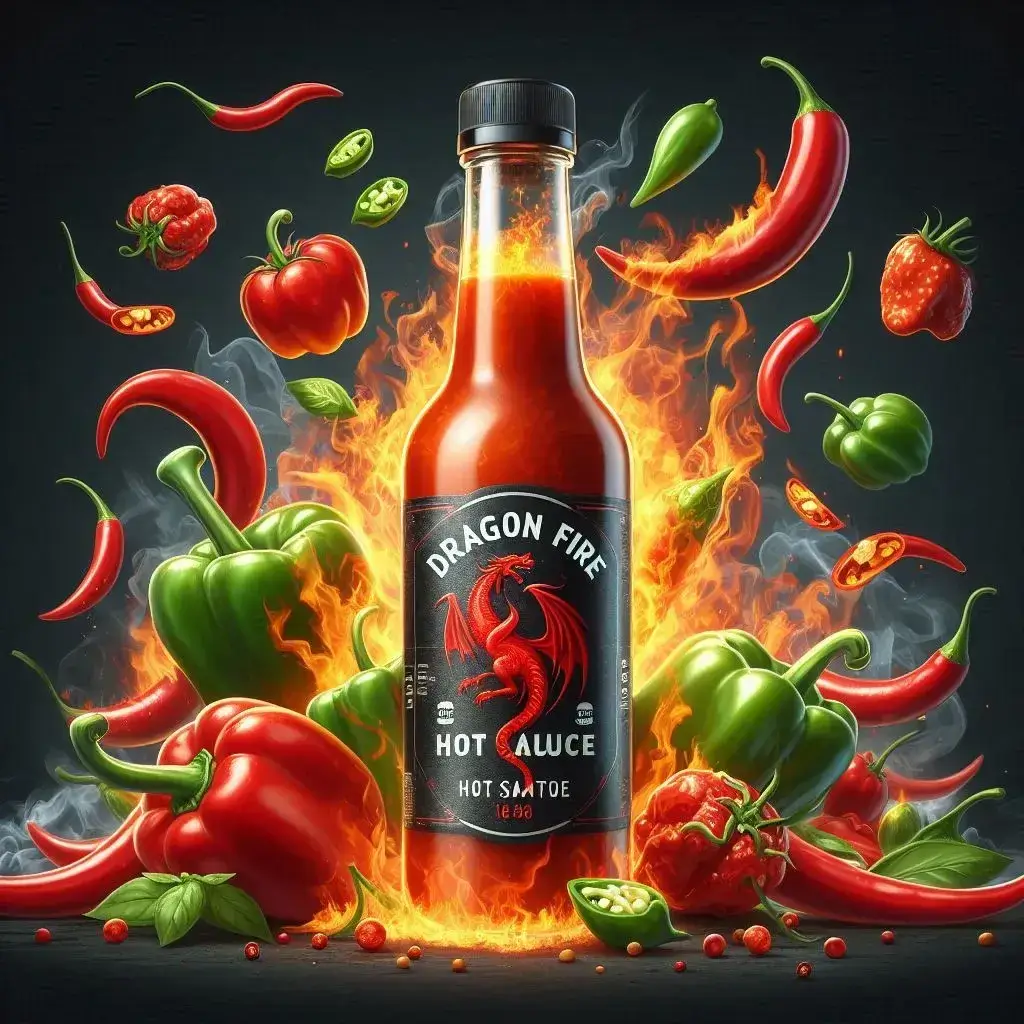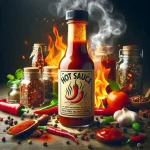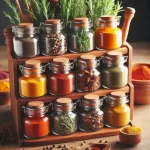
Table of Contents
Crafting the best hot sauce at home is a culinary adventure that combines the right balance of heat, flavor, and consistency. Whether you’re a seasoned spice enthusiast or just starting to explore the world of heat, this recipe offers a versatile, flavorful sauce that can elevate any dish, from tacos and wings to eggs and even cocktails. Here’s how to create a hot sauce that’s bursting with flavor, easy to make, and customizable to your heat tolerance.
Ingredients:
- Chili Peppers (1 lb): The core ingredient for any hot sauce. The type of chili pepper you choose will determine the heat level. For a milder sauce, opt for jalapeños or Fresno peppers. If you want something fiery, try habaneros or Scotch bonnets. A mix of different peppers can add complexity and depth to the sauce.
- Garlic (4 cloves): Garlic adds a savory depth and rounds out the sharpness of the peppers, making the sauce more balanced.
- Onion (1 medium): A medium onion provides sweetness and a slight pungency that complements the peppers.
- White Vinegar (1 cup): Vinegar not only adds acidity but also acts as a preservative, ensuring your hot sauce has a long shelf life.
- Lime Juice (Juice of 2 limes): Lime juice adds a fresh, tangy note that brightens up the sauce.
- Salt (1 tsp): Essential for enhancing flavors and bringing out the best in your ingredients.
- Sugar (1 tbsp): A small amount of sugar balances the acidity and heat, creating a more rounded flavor.
- Water (as needed): Used to adjust the consistency of the sauce.
- Optional Spices: Cumin, smoked paprika, or coriander can add an extra layer of flavor to the sauce.
Instructions:
1. Preparation:
Begin by washing and drying your chili peppers. Depending on your heat preference, you can remove the seeds and membranes, which hold most of the heat, or leave them in for a spicier sauce. Chop the peppers into small pieces. Prepare the garlic and onion by peeling and chopping them finely.
2. Sautéing the Base:
Heat a tablespoon of oil in a medium saucepan over medium heat. Add the chopped garlic and onion, sautéing until they are soft and translucent, about 5 minutes. This step mellows the sharpness of the onion and garlic, making them a perfect base for the sauce.
3. Cooking the Peppers:
Add the chopped chili peppers to the saucepan, stirring to combine with the garlic and onion. Cook for another 5 minutes until the peppers start to soften. This cooking process releases the essential oils from the peppers, intensifying their flavor and heat.
4. Simmering:
Pour in the white vinegar and lime juice, then add the salt and sugar. Stir everything together and bring the mixture to a boil. Once boiling, reduce the heat to low and let it simmer for 15-20 minutes. This allows the flavors to meld and the peppers to soften further. If the sauce thickens too much, add a little water to reach your desired consistency.
5. Blending:
Once the mixture has simmered and is fully cooked, carefully transfer it to a blender or food processor. Blend until smooth. If you prefer a chunkier sauce, pulse the blender until you achieve the desired texture. For a completely smooth sauce, you can strain it through a fine-mesh sieve to remove any remaining solids.
6. Tasting and Adjusting:
Taste your hot sauce and adjust the seasoning as needed. If it’s too acidic, add a bit more sugar. If it’s not salty enough, add a pinch more salt. You can also add more lime juice or vinegar if you like your sauce tangier.
7. Bottling and Storing:
Once you’re satisfied with the flavor, let the sauce cool to room temperature. Pour it into sterilized glass bottles or jars. Properly sterilizing the containers is crucial for preserving the sauce. Store your hot sauce in the refrigerator, where it will keep for up to six months.
Variations:
- Fermented Hot Sauce: For a more complex flavor, try fermenting the chili peppers before making the sauce. This involves leaving the chopped peppers in a saltwater brine at room temperature for several days. Fermentation adds a tangy, umami-rich note that’s hard to achieve with fresh peppers alone.
- Smoked Peppers: If you enjoy a smoky flavor, use smoked peppers like chipotle, or smoke the fresh peppers before cooking. This variation works particularly well with grilled meats and barbecue.
- Sweet and Spicy: Add fruits like mango, pineapple, or peach for a sweet and spicy hot sauce. The natural sweetness of the fruit pairs beautifully with the heat from the peppers, creating a sauce that’s perfect for glazing chicken or adding to tropical salsas.
Tips for Success:
- Use Fresh Ingredients: The fresher the ingredients, the better the flavor. Try to use peppers, garlic, and onions that are at their peak for the best results.
- Handle with Care: When handling hot peppers, it’s a good idea to wear gloves to avoid irritation. The oils from the peppers can be very strong and difficult to wash off, so avoid touching your face, especially your eyes.
- Experiment: Don’t be afraid to experiment with different types of peppers, vinegars, and additional flavorings. Making hot sauce is an art, and part of the fun is customizing it to your taste.


Conclusion:
Creating your own hot sauce at home is not only fun but also allows you to customize the heat and flavor to your liking. Whether you prefer a fiery kick or a milder heat with a hint of sweetness, this recipe provides a solid foundation for your hot sauce adventures. The next time you’re looking to spice up a dish, reach for your homemade sauce and enjoy the fruits of your labor. With a little experimentation, you might just discover your new favorite condiment.




